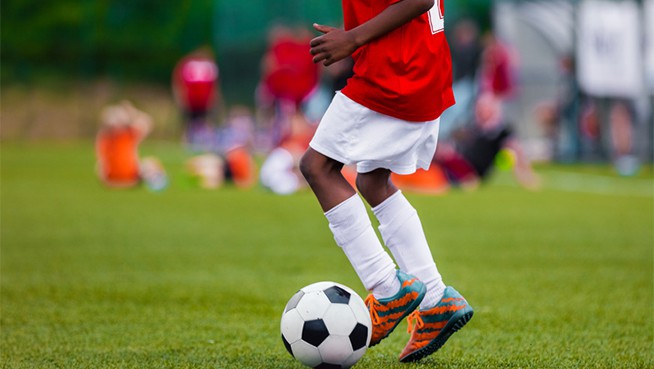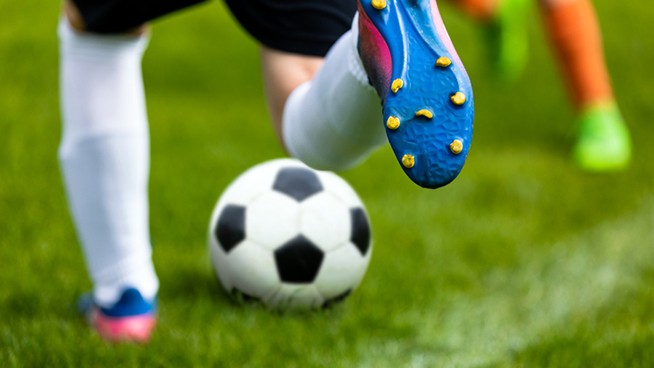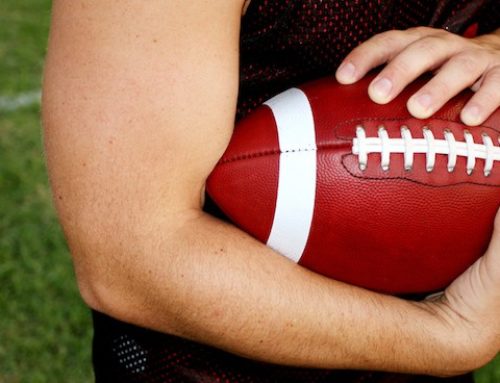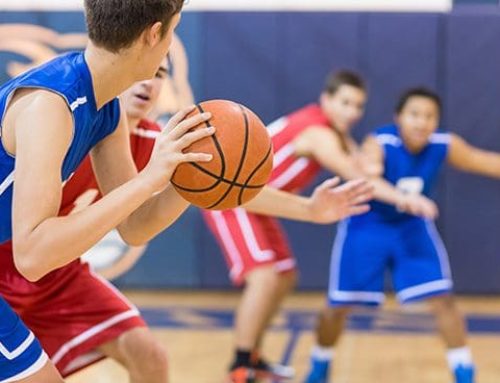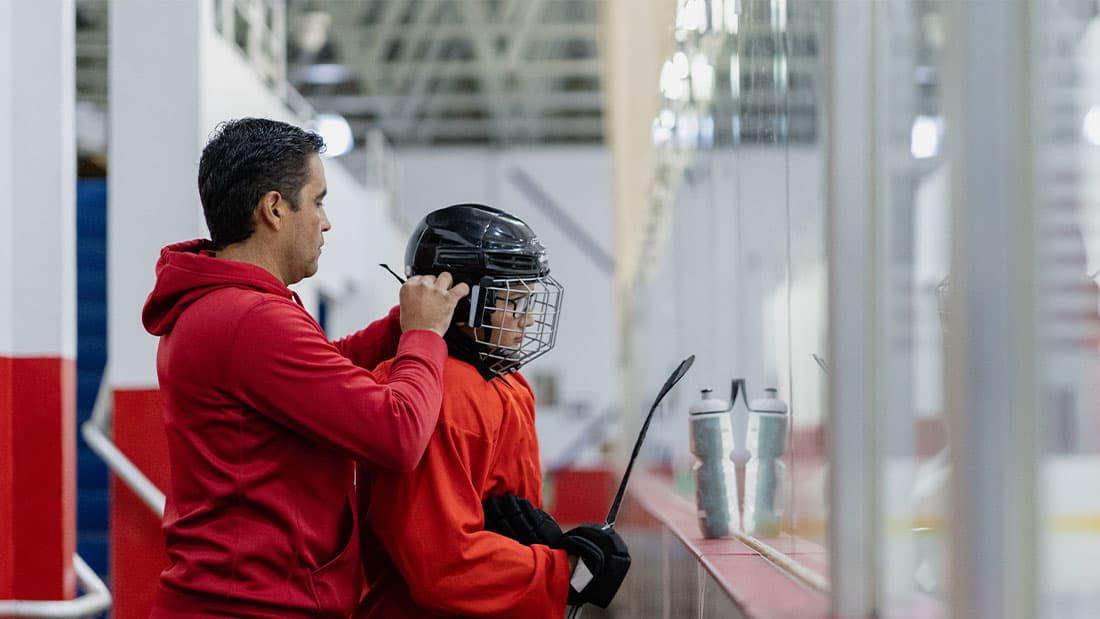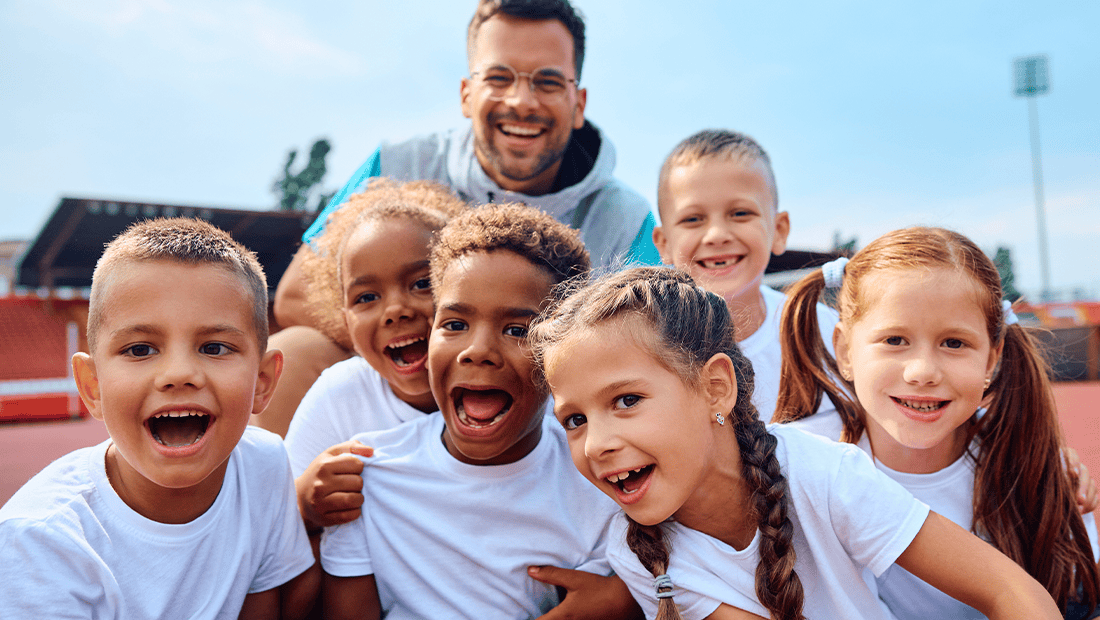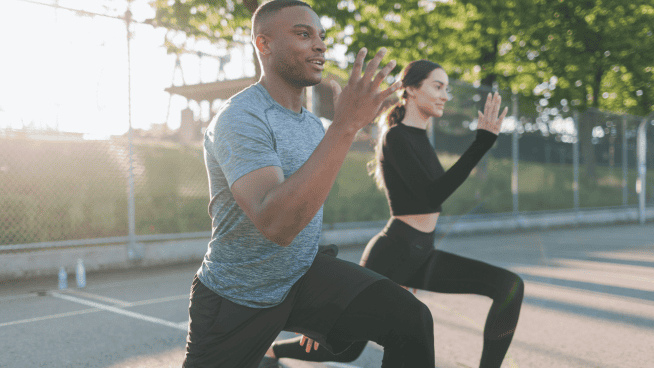How to Develop Better Athletic Balance
Balance is an important athletic skill. Many of the world’s greatest athletes demonstrate exceptional balance on a regular basis.
Since it cannot be easily measured like strength or speed, we often have a hard time quantifying balance and figuring out the best ways to improve it. Balance refers to the ability to maintain equilibrium in relation to the force of gravity. When most people think of balance, they think of standing on one leg for a long period of time without falling over, which is a form of static balance. Static balance is the ability to maintain equilibrium while stationary.
The other form of balance is called dynamic balance, which is the ability to maintain equilibrium while moving. A great example of dynamic balance is riding a bicycle. To go a step further, a great example of both static and dynamic balance in action together would be a gymnastics routine on a balance beam.
The reason balance is such an important athletic skill is that it is intertwined with so many other basic movement skills like running, jumping, landing, twisting and rotating, which in turn make up, in some shape or form, many sports skills. One could say that the development of balance is the foundation off which all other movements are developed.
Since balance is seen in so many different athletic skills, then it only makes sense to train it early and often so children develop a good all around balance skill-set. According to youth training expert Józef Drabik, the most sensitive periods to train balance for boys is around 10-11 years of age, and ages 9-10 for girls. Balance reaches maturity around the ages of 12-14. The reality is that most active children are continually developing a sense of balance throughout pre-adolescence into early adolescence.
Before diving into ideas for training balance, it’s important to encourage adults in charge of children to make sure children lead active lives which will encourage developing a good sense of balance. Things like playing at the playground, learning to ride a bike or roller skating, learning to swim, learning to ski or ice skate are all great examples of activities that offer a wealth balance development opportunities.
As already mentioned, balance is intertwined with many other basic movement skills. The following list includes some of the different types of balance and some examples of how to train each.
Supporting Balance
Supporting balance is supporting or maintaining equilibrium using different parts of the body. In its simplest form, standing on one leg is a form of supporting balance. But we can greatly expand that idea to include balance from multiple stances, on the hands, feet, knees, elbows or any combination of them, as well as transitioning to and from those positions. As a youth coach, I especially like supporting balance, because it helps develop all-around strength. In sports, some clear examples of supporting balance are a lineman blocking in football, a player battling in the low post in basketball, and a floor routine in gymnastics. The above video shows different forms of supporting balance, both static and dynamic, in the training environment.
Rolling/Rotational/Falling Balance
In the competitive athletic arena, falling on the ground is bound to happen. Whether it’s being tackled in football or rugby, diving for a loose ball in basketball, executing a slide tackle in soccer, or simply being tripped up or shoved down by an aggressive opponent, this type of balance will be tested.
Rolling/rotational/falling balance depends on knowing where your body is in space and in relation to the ground (i.e., spatial awareness) and second, knowing how to fall to best make a play or protect oneself. Training young athletes, we spend a significant amount of time practicing losing balance only to regain it by exploring different rolling, twisting, rotational activities. The above video shows some of the different ways to explore rolling and falling balance.
Gliding/Sliding/Cutting Balance
Sliding/gliding movements, seen in skiing and ice skating, as well as rapid change of direction/cutting movements seen in field and court sports, rely heavily on weight shifts laterally from side to side. The athlete needs to maintain balance as he or she attempts another turn or stride. Although we don’t have ice or snow in the gym, we can easily train elements of gliding/sliding/cutting balance on other surfaces. One that comes to mind is a simple slide board where the athlete can work on developing strength and balance by pushing side to side on a dry slick surface. But the purpose on this article will focus on dryland activities to develop these unique balance skills. One of my favorite activities for gliding/sliding and cutting is the simple Skater Jump or Heiden Jump. A simple lateral jump from one foot to another helps develop this lateral balance. It’s an easy exercise to learn for young children and a lot of fun to progress for more advanced athletes. The above video shows some examples of gliding/sliding/cutting activities.
Air Balance
In many sports, the athlete will find themselves airborne at some point. Actions involving jumping, throwing, sliding, diving and catching in sports like football, basketball, baseball, soccer, track and field, volleyball and gymnastics, for example, will present moments where the athletes needs to maintain balance and control in the air. Training air balance is fun for the both the coach and athlete. There are many combinations of movements to explore and one is only limited their creativity and imagination. The above video shows some of the various ways to train air balance.
The best time to train balance activities is to begin in early pre-adolescence into early adolescence, typically between the ages of 6-12. The goal is to continually and consistently expose the young athlete to years of versatile and diverse movement challenges. Balance is much more that just standing on one leg. Balance encompasses just about everything we do as human beings, and the better we develop our all-around sense of balance, the better movers we will be.
If you enjoyed this article, be sure to follow Jeremy on Twitter!
References:
Wormhoudt René. The Athletic Skills Model: Optimizing Talent Development through Movement Education. Routledge, 2018.
Drabik Józef. Children and Sports Training: How Your Future Champions Should Exercise to Be Healthy, Fit, and Happy. Stadion, 1996.
Gabbard, Carl, et al. Physical Education for Children: Building the Foundation. Prentice-Hall, 1994.
Grasso, Brian. “Coordination & Movement Skill Development – The Key to Long-Term Athletic Success.” MFA – Perform Better.
READ MORE:
RECOMMENDED FOR YOU
MOST POPULAR
How to Develop Better Athletic Balance
Balance is an important athletic skill. Many of the world’s greatest athletes demonstrate exceptional balance on a regular basis.
Since it cannot be easily measured like strength or speed, we often have a hard time quantifying balance and figuring out the best ways to improve it. Balance refers to the ability to maintain equilibrium in relation to the force of gravity. When most people think of balance, they think of standing on one leg for a long period of time without falling over, which is a form of static balance. Static balance is the ability to maintain equilibrium while stationary.
The other form of balance is called dynamic balance, which is the ability to maintain equilibrium while moving. A great example of dynamic balance is riding a bicycle. To go a step further, a great example of both static and dynamic balance in action together would be a gymnastics routine on a balance beam.
The reason balance is such an important athletic skill is that it is intertwined with so many other basic movement skills like running, jumping, landing, twisting and rotating, which in turn make up, in some shape or form, many sports skills. One could say that the development of balance is the foundation off which all other movements are developed.
Since balance is seen in so many different athletic skills, then it only makes sense to train it early and often so children develop a good all around balance skill-set. According to youth training expert Józef Drabik, the most sensitive periods to train balance for boys is around 10-11 years of age, and ages 9-10 for girls. Balance reaches maturity around the ages of 12-14. The reality is that most active children are continually developing a sense of balance throughout pre-adolescence into early adolescence.
Before diving into ideas for training balance, it’s important to encourage adults in charge of children to make sure children lead active lives which will encourage developing a good sense of balance. Things like playing at the playground, learning to ride a bike or roller skating, learning to swim, learning to ski or ice skate are all great examples of activities that offer a wealth balance development opportunities.
As already mentioned, balance is intertwined with many other basic movement skills. The following list includes some of the different types of balance and some examples of how to train each.
Supporting Balance
Supporting balance is supporting or maintaining equilibrium using different parts of the body. In its simplest form, standing on one leg is a form of supporting balance. But we can greatly expand that idea to include balance from multiple stances, on the hands, feet, knees, elbows or any combination of them, as well as transitioning to and from those positions. As a youth coach, I especially like supporting balance, because it helps develop all-around strength. In sports, some clear examples of supporting balance are a lineman blocking in football, a player battling in the low post in basketball, and a floor routine in gymnastics. The above video shows different forms of supporting balance, both static and dynamic, in the training environment.
Rolling/Rotational/Falling Balance
In the competitive athletic arena, falling on the ground is bound to happen. Whether it’s being tackled in football or rugby, diving for a loose ball in basketball, executing a slide tackle in soccer, or simply being tripped up or shoved down by an aggressive opponent, this type of balance will be tested.
Rolling/rotational/falling balance depends on knowing where your body is in space and in relation to the ground (i.e., spatial awareness) and second, knowing how to fall to best make a play or protect oneself. Training young athletes, we spend a significant amount of time practicing losing balance only to regain it by exploring different rolling, twisting, rotational activities. The above video shows some of the different ways to explore rolling and falling balance.
Gliding/Sliding/Cutting Balance
Sliding/gliding movements, seen in skiing and ice skating, as well as rapid change of direction/cutting movements seen in field and court sports, rely heavily on weight shifts laterally from side to side. The athlete needs to maintain balance as he or she attempts another turn or stride. Although we don’t have ice or snow in the gym, we can easily train elements of gliding/sliding/cutting balance on other surfaces. One that comes to mind is a simple slide board where the athlete can work on developing strength and balance by pushing side to side on a dry slick surface. But the purpose on this article will focus on dryland activities to develop these unique balance skills. One of my favorite activities for gliding/sliding and cutting is the simple Skater Jump or Heiden Jump. A simple lateral jump from one foot to another helps develop this lateral balance. It’s an easy exercise to learn for young children and a lot of fun to progress for more advanced athletes. The above video shows some examples of gliding/sliding/cutting activities.
Air Balance
In many sports, the athlete will find themselves airborne at some point. Actions involving jumping, throwing, sliding, diving and catching in sports like football, basketball, baseball, soccer, track and field, volleyball and gymnastics, for example, will present moments where the athletes needs to maintain balance and control in the air. Training air balance is fun for the both the coach and athlete. There are many combinations of movements to explore and one is only limited their creativity and imagination. The above video shows some of the various ways to train air balance.
The best time to train balance activities is to begin in early pre-adolescence into early adolescence, typically between the ages of 6-12. The goal is to continually and consistently expose the young athlete to years of versatile and diverse movement challenges. Balance is much more that just standing on one leg. Balance encompasses just about everything we do as human beings, and the better we develop our all-around sense of balance, the better movers we will be.
If you enjoyed this article, be sure to follow Jeremy on Twitter!
References:
Wormhoudt René. The Athletic Skills Model: Optimizing Talent Development through Movement Education. Routledge, 2018.
Drabik Józef. Children and Sports Training: How Your Future Champions Should Exercise to Be Healthy, Fit, and Happy. Stadion, 1996.
Gabbard, Carl, et al. Physical Education for Children: Building the Foundation. Prentice-Hall, 1994.
Grasso, Brian. “Coordination & Movement Skill Development – The Key to Long-Term Athletic Success.” MFA – Perform Better.
READ MORE:

